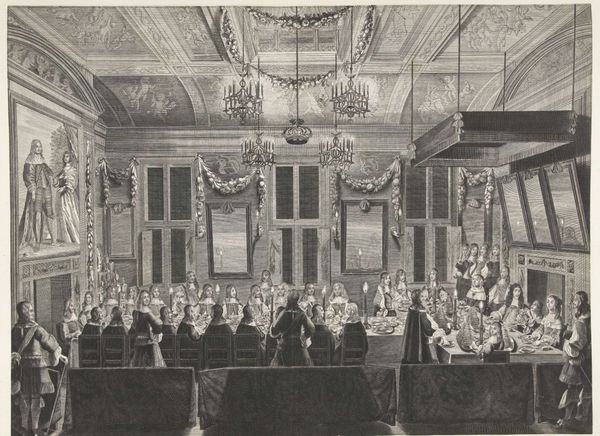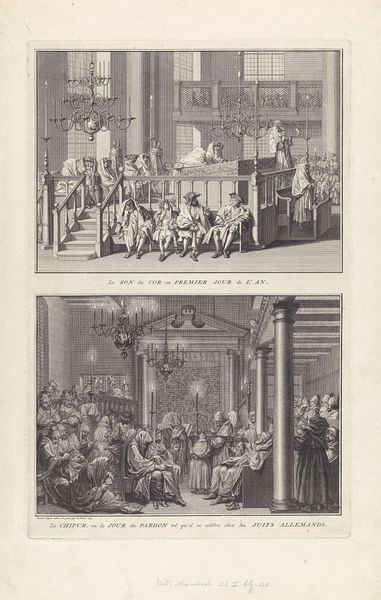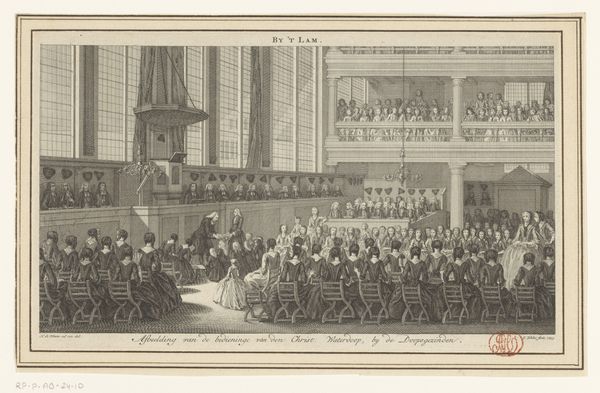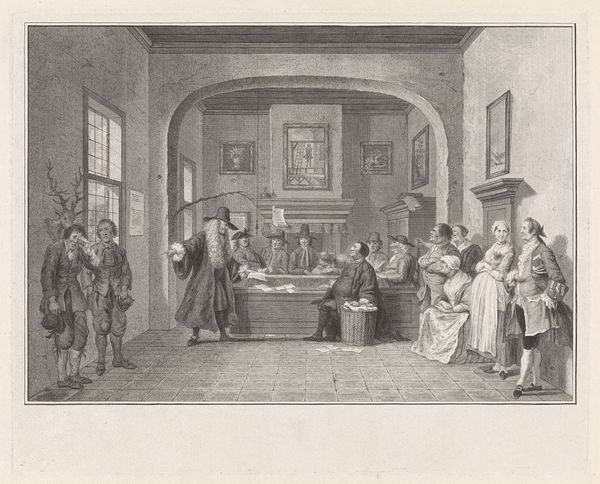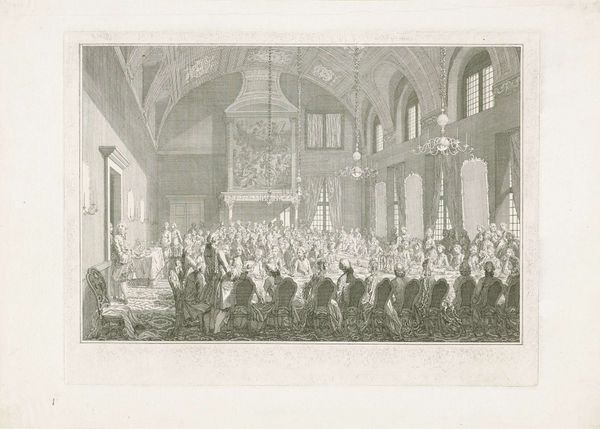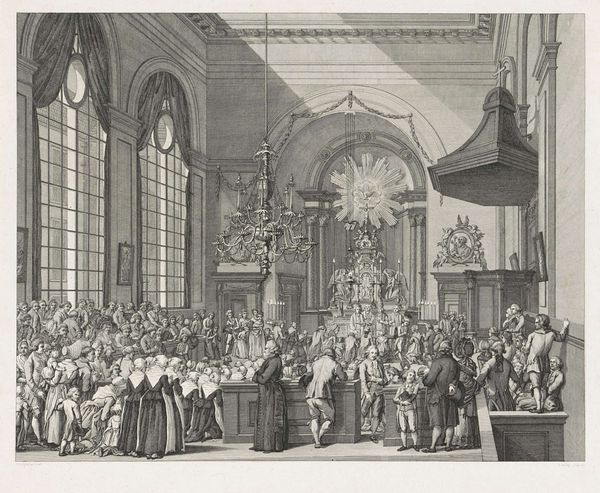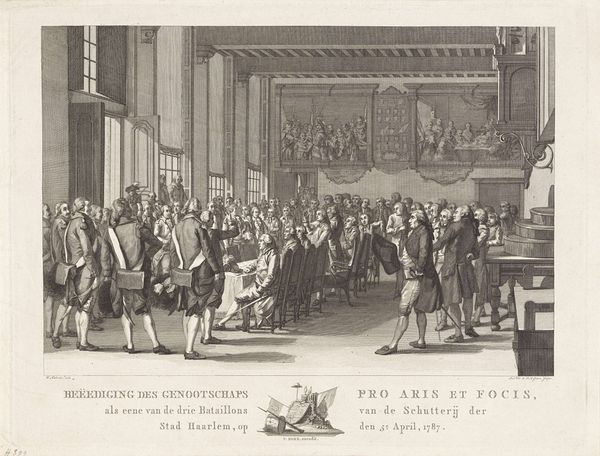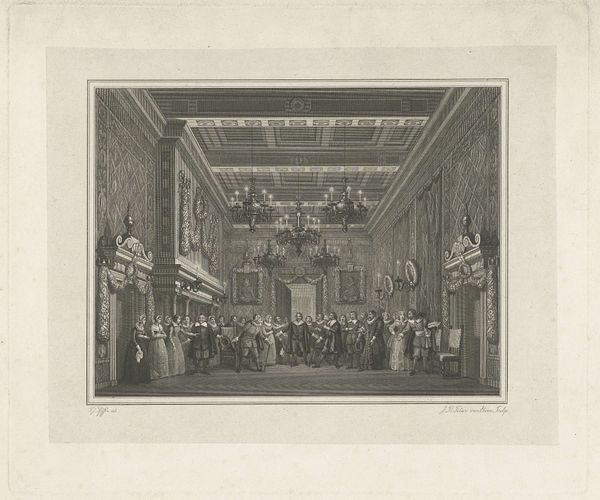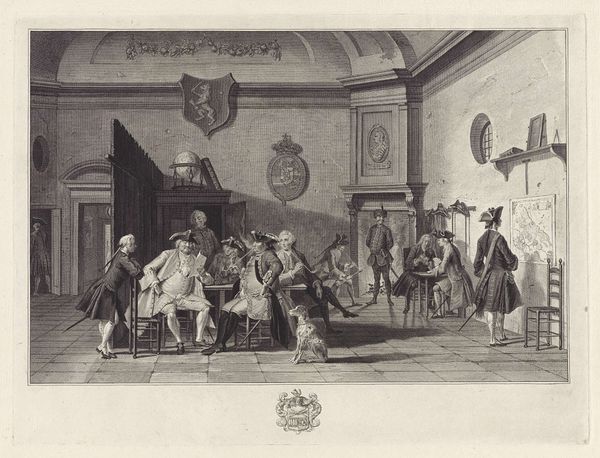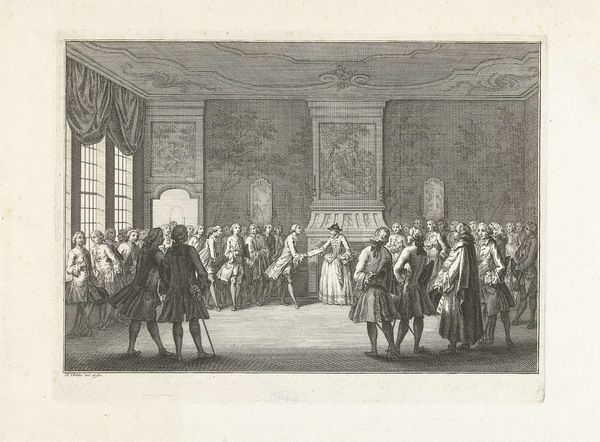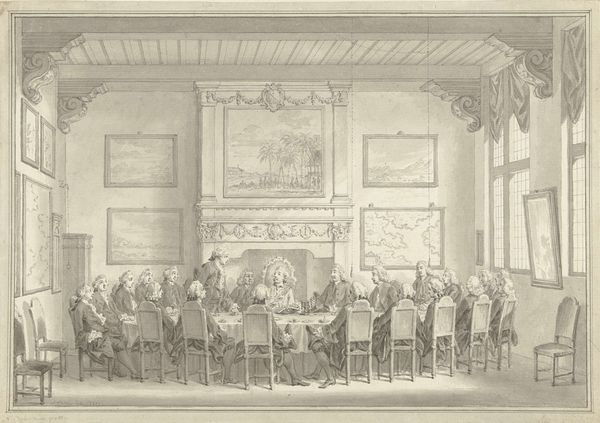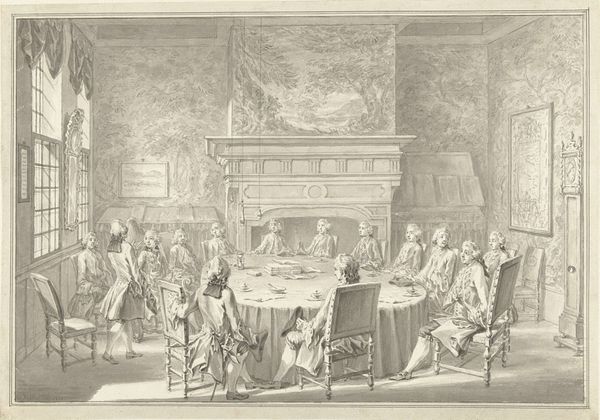
Openbare voorlezing van enige Psalmen in de nieuwe berijming, 1773 1777
0:00
0:00
Dimensions: height 243 mm, width 323 mm
Copyright: Rijks Museum: Open Domain
Editor: We're looking at Reinier Vinkeles’s engraving, "Openbare voorlezing van enige Psalmen in de nieuwe berijming, 1773," created in 1777 and housed in the Rijksmuseum. It depicts a formal gathering of people, presumably listening to a reading. I'm struck by the formality of the scene and the sheer number of people gathered. What stands out to you? Curator: What immediately arrests my attention are the symbolic gestures and positioning within the engraving. Observe how the light illuminates certain figures while others recede into shadow. This isn’t just about Baroque aesthetic flair; it subtly guides our perception, suggesting a hierarchy or perhaps different levels of engagement with the reading. Editor: Hierarchy? Curator: Indeed. Consider the context: 1777. What emotions might people be trying to convey, and what tensions are suggested but concealed? Is everyone equally represented in the act of listening and being read to? Who has the authority in this gathering, and how is that visually communicated? Look at the way the artist draws focus to specific symbols in the room. How might these symbols tie to memory? Editor: That's interesting, I didn't really pick up on a sense of unease. I was more drawn to the detail in the architectural rendering. Curator: And yet, remember that visual detail also serves ideological purposes. Is it about religious devotion? Political discourse veiled in religious custom? Vinkeles seems intent on capturing a specific moment in time but he may be trying to depict how individuals respond to a transformation of tradition. Notice how different reactions ripple out from the table towards the edges of the room... Does this provide insights to their states of minds, perhaps their individual convictions and struggles? Editor: I see your point. The body language does seem quite telling when you look closely. This makes me consider history as it unfolded in the moment, as opposed to how we might remember or commemorate the reading today. Curator: Precisely! That emotional and psychological space informs how we connect, or perhaps disconnect, with our own cultural lineage and visual imagery that shapes our sense of place within history.
Comments
No comments
Be the first to comment and join the conversation on the ultimate creative platform.
